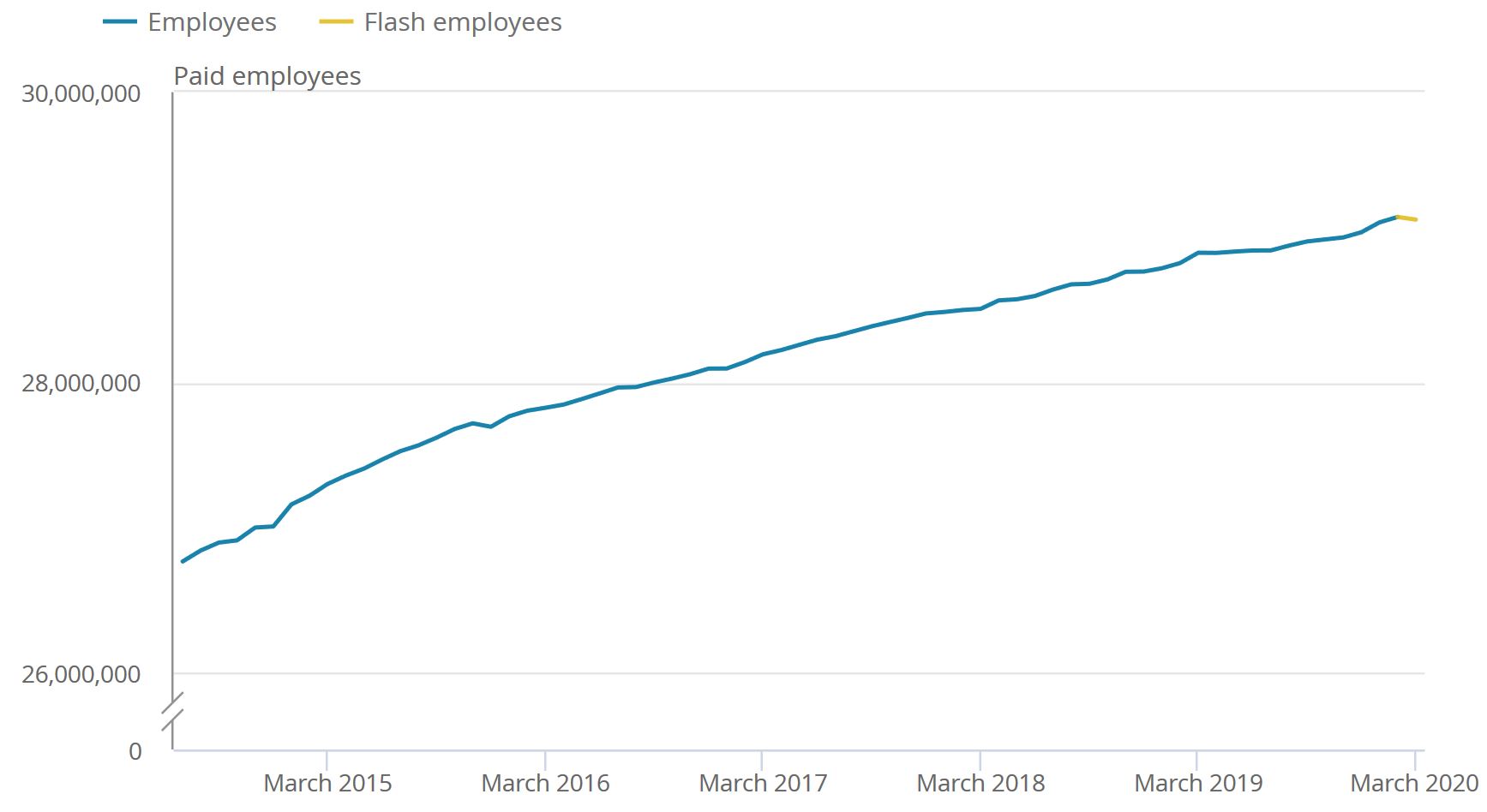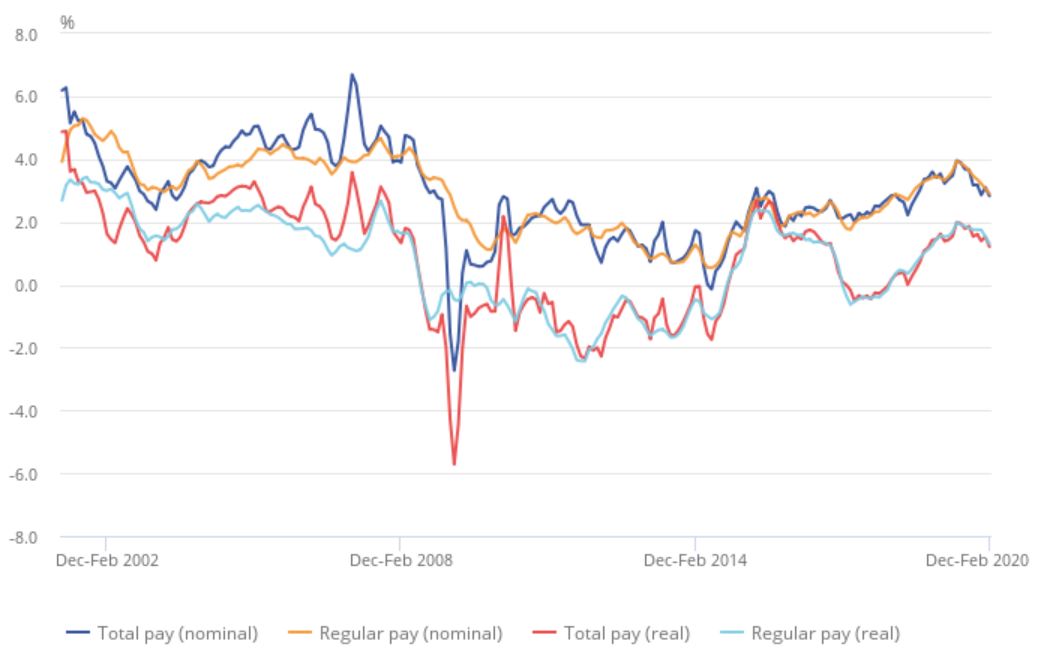ONS Labour Market Overview April 2020
The UK employment rate hit a record high in the three months to February according to the latest ONS data. However, there were signs of the labour market cooling ahead of coronavirus lockdown measures, with a slight increase in unemployment. Early estimates for March also show a reduction in paid employees and job vacancies.
Early signs of weakening labour market
For the first time, the ONS brought forward information on the number of employees in work using PAYE, which provides an early estimate for March and shows a predictably softening picture. Based on flash estimates for March, the number of paid employees fell by 0.06% compared with February 2020.
Paid employees, UK, July 2014 to March 2020, seasonally adjusted

Source: ONS
Vacancies continue to cool
Job vacancies saw a deterioration between January and March 2020, with 52,000 fewer vacancies compared to last year at an estimated 795,000. Importantly, this data was collected before the implementation of Covid-19 social distancing measures.
The retail sector accounted for around 10.8% of all vacancies in the UK in the three months to March.
Follows record employment in February
The proportion of 16 to 64 year olds employed in work hit a high of 76.6% in the three months to February – up by 0.4% points up on last year and 0.2% points higher than last the quarter.
This came as the employment rate for women hit another record high at 72.7% (the employment rate for men was largely unchanged at 80.5%), while the number of workers aged over 50 years hit a high of 10.70 million. Overall, the number of people in employment rose to 33.07 million people in the three months to February, up by 352,000 on last year.
The number of people aged from 16 to 64 years old that are economically inactive (not working and not seeking or available to work) reached a record low of 20.2% – down 0.4% points compared to last year and down 0.3% points on the last quarter. This was driven by record low inactivity among women at 24.5%.
Meanwhile, the unemployment rate remained broadly unchanged on last year at 4.0%, but was 0.1% points higher than the previous quarter. An estimated 1.36 million people were unemployed – 22,000 more than last year, but 476,000 fewer than five years ago.
Real earnings slow
Earnings growth has continued to slow since mid-2019. Average weekly earnings for employees edged down to 2.8% in the three months to February 2020 for total pay (including bonuses), and 2.9% for regular pay (excluding bonuses).
This indicates that in real terms (adjusted for inflation) total pay is growing at around 1.2%, and 1.3% for regular pay – down from a recent high of 2% in the three months to June 2019.
Great Britain average weekly earnings annual growth rates, seasonally adjusted, January to March 2001 to December to February 2020

Source: ONS
For February 2020 in nominal terms (that is, not adjusted for price inflation):
- Average regular pay (excluding bonuses) for employees in Great Britain was £511 per week before tax and other deductions from pay, up from £497 per week for a year earlier
- Average total pay (including bonuses) for employees in Great Britain was £545 per week before tax and other deductions from pay, up from £531 per week for a year earlier
Back to Retail Economic News